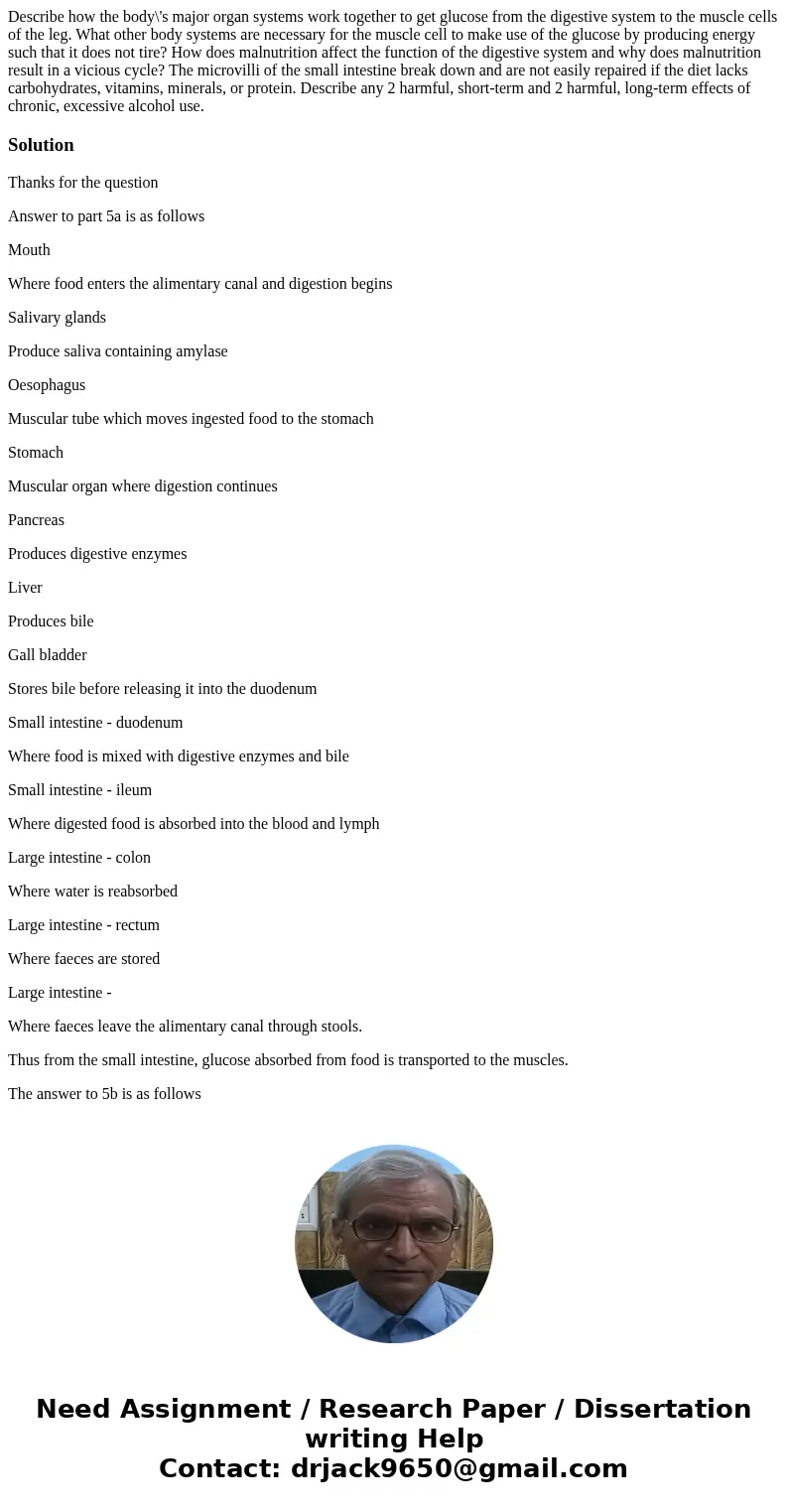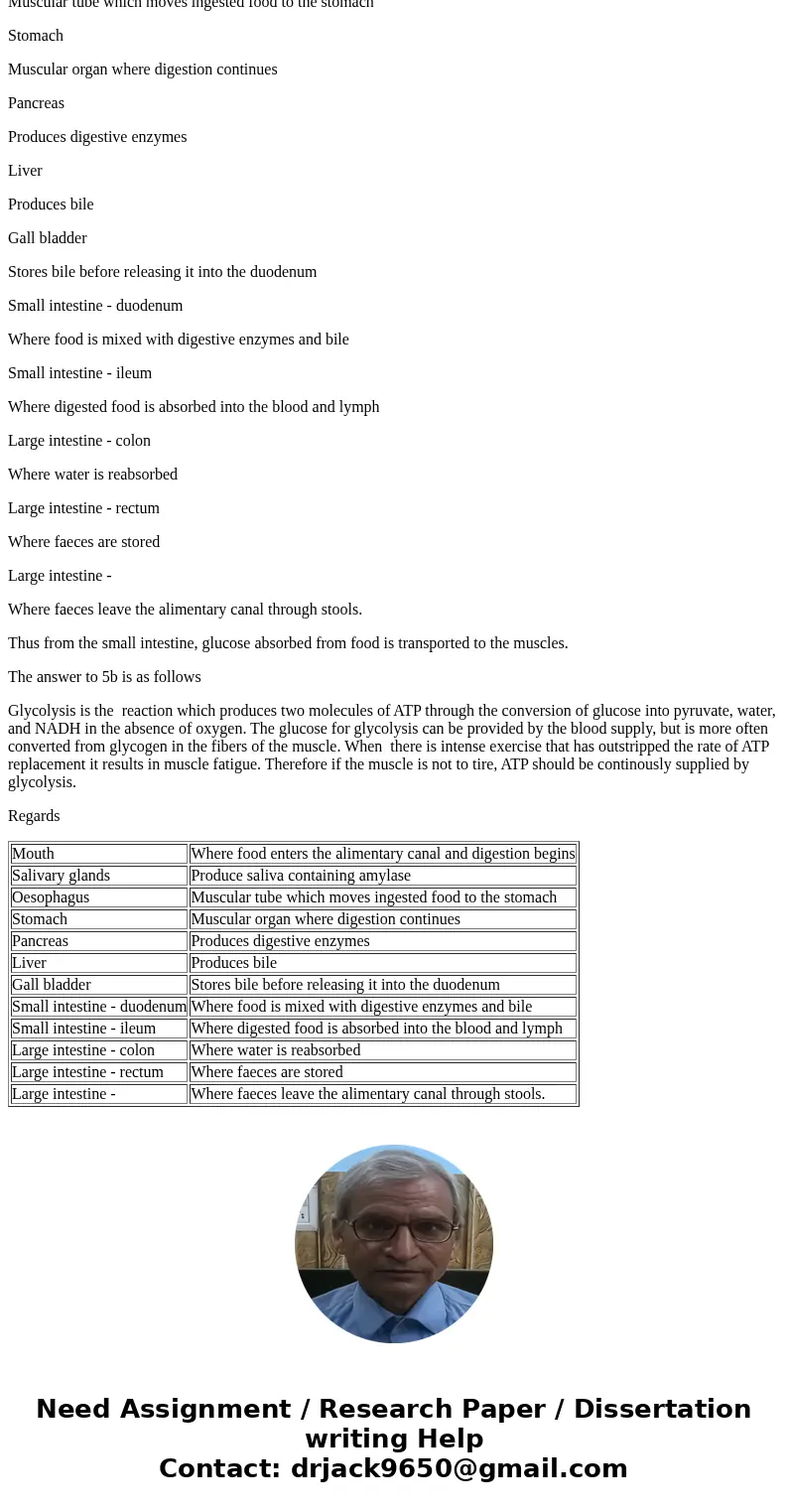Describe how the bodys major organ systems work together to
Solution
Thanks for the question
Answer to part 5a is as follows
Mouth
Where food enters the alimentary canal and digestion begins
Salivary glands
Produce saliva containing amylase
Oesophagus
Muscular tube which moves ingested food to the stomach
Stomach
Muscular organ where digestion continues
Pancreas
Produces digestive enzymes
Liver
Produces bile
Gall bladder
Stores bile before releasing it into the duodenum
Small intestine - duodenum
Where food is mixed with digestive enzymes and bile
Small intestine - ileum
Where digested food is absorbed into the blood and lymph
Large intestine - colon
Where water is reabsorbed
Large intestine - rectum
Where faeces are stored
Large intestine -
Where faeces leave the alimentary canal through stools.
Thus from the small intestine, glucose absorbed from food is transported to the muscles.
The answer to 5b is as follows
Glycolysis is the reaction which produces two molecules of ATP through the conversion of glucose into pyruvate, water, and NADH in the absence of oxygen. The glucose for glycolysis can be provided by the blood supply, but is more often converted from glycogen in the fibers of the muscle. When there is intense exercise that has outstripped the rate of ATP replacement it results in muscle fatigue. Therefore if the muscle is not to tire, ATP should be continously supplied by glycolysis.
Regards
| Mouth | Where food enters the alimentary canal and digestion begins |
| Salivary glands | Produce saliva containing amylase |
| Oesophagus | Muscular tube which moves ingested food to the stomach |
| Stomach | Muscular organ where digestion continues |
| Pancreas | Produces digestive enzymes |
| Liver | Produces bile |
| Gall bladder | Stores bile before releasing it into the duodenum |
| Small intestine - duodenum | Where food is mixed with digestive enzymes and bile |
| Small intestine - ileum | Where digested food is absorbed into the blood and lymph |
| Large intestine - colon | Where water is reabsorbed |
| Large intestine - rectum | Where faeces are stored |
| Large intestine - | Where faeces leave the alimentary canal through stools. |


 Homework Sourse
Homework Sourse